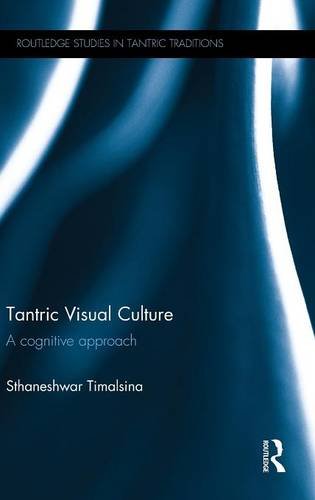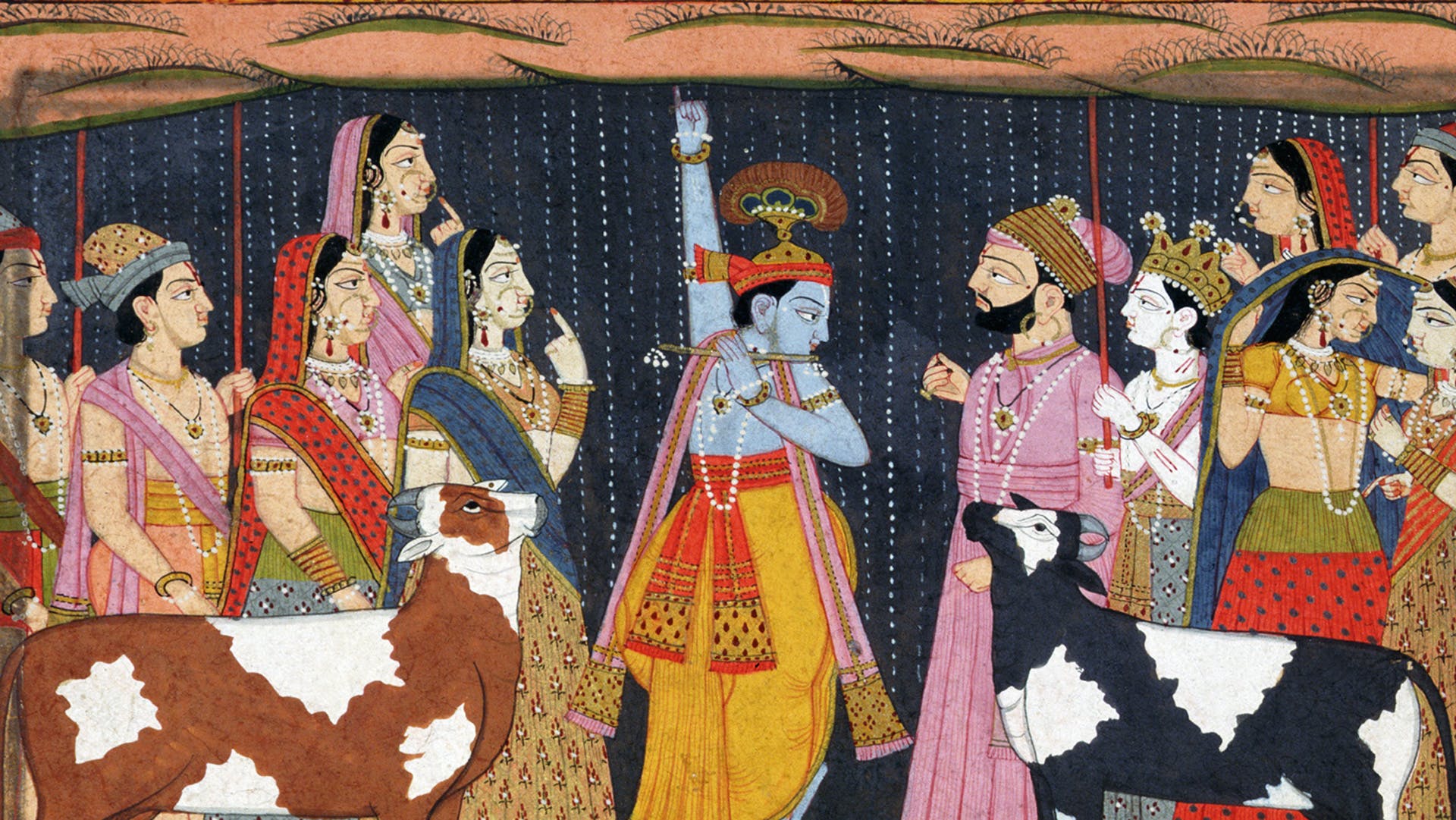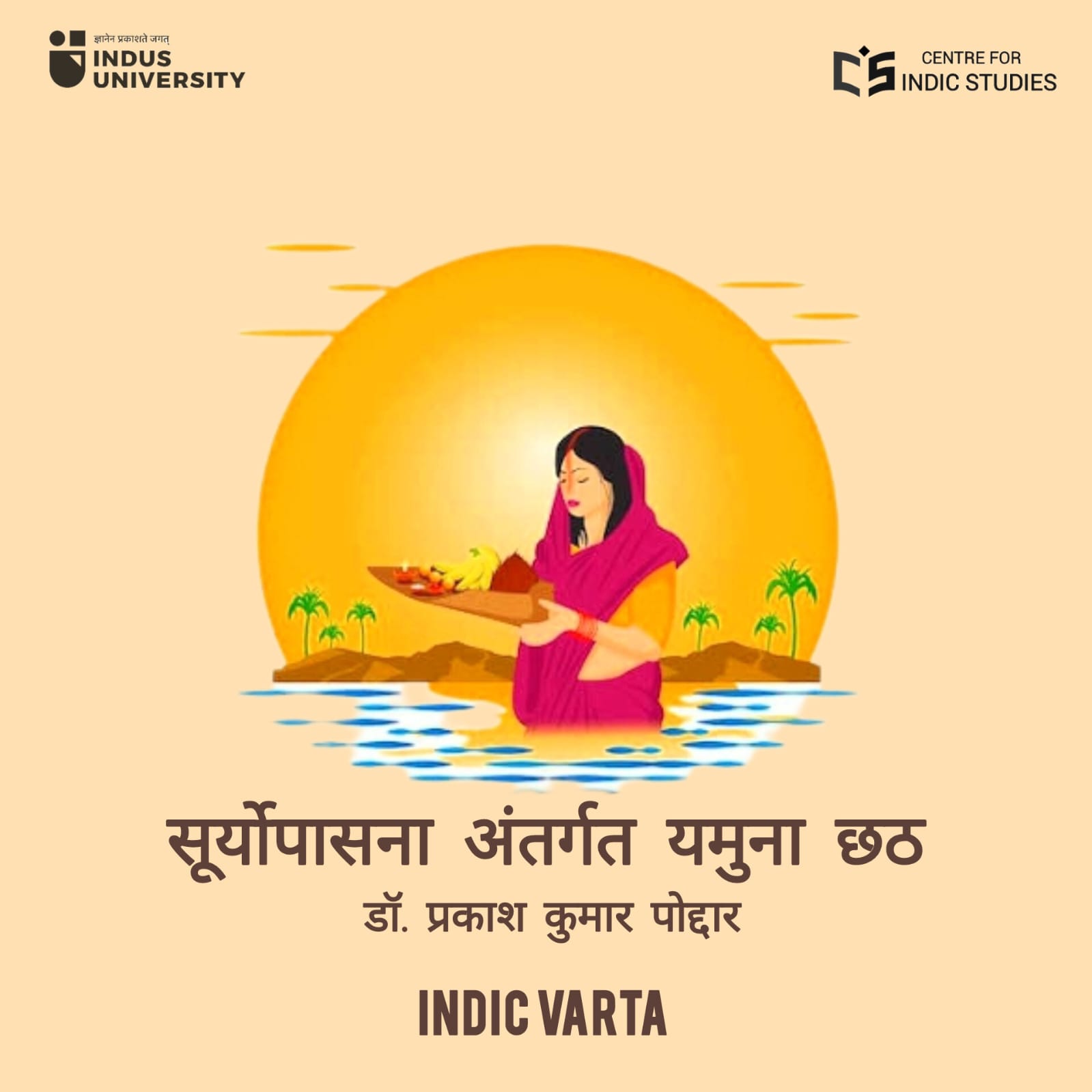- Visitor:23
- Published on:
The Framework of Rasa
What is the meaning of experiencing rasa? Can rasa experience be classified only as a mental or aesthetic experience? Read this excerpt from Sthaneshwar Timalsina’s book to find out.

That rasa theory is not monolithic can be clearly seen in the classical debate over the number of rasas and the mechanism to experience them. This is not the place to engage the classical philosophical debate over the nature of rasa, as many contemporary writings address these issues. The application of rasa to understand religious experience and the comparison of rasa to catharsis and its application as a viable literary theory is also not new. Although available in secondary literature, it is necessary to briefly address the framework of rasa before engaging visualization practices in light of this esthetic theory.
According to Bharata, esthetic experience (rasa) is expressed through the “conjunction of the determinants (vibhavas) [that function as the instigators], the consequents (anubha-vas) and the complementary psychological states (vyabhicarins) [that accompany the emotions]” (NS´ VI.33).
The stimulants instrumental in bringing the dormant (sthayin) emotions such as passion to the forefront of experience are called determinants. Those that are instrumental in causing passion etc. to be experienced as after or subordinate to another experience are called the consequents. Those that are instrumental in letting passion etc. flow throughout the body are called the complementary psychological states. These are all subordinate to rasa experience. Bharata counts forty-nine emotions, of which he describes eight as ‘dormant’ (sthayin). These emotions (love, joy, sorrow, anger, energy, fear, disgust, and astonishment) form the core of the eight central esthetic experiences (erotic (srngara), comic (hasya), tragic (karuna), furious (raudra), heroic (vıra), timorous (Bhayanka), disgusting (bıbhatsa), and wondrous (adbhuta).
The emotions listed as ‘dormant’ are to be understood as “the emotion which is not swallowed up by other emotions whether friendly with it or unfriendly, which quickly dissolves the others into its own condition like the salt-sea, which endures continuously in the mind, and which, combining with its objects and situations, attains to its fullest expression as rasa – that is the durable emotion.”
Among these, only four rasas are considered as primary: erotic (srngara), heroic (vıra), disgusting (bıbhatsa), and furious (raudra). This, in essence, affirms the primacy of four durable emotions: desire (rati), heroic energy (utsaha), disgust (Jugupsa), and anger (krodha). The discourse on rasa also highlights that there are four rasas that contrast and are paired with the remaining four (erotic with disgusting, heroic with timorous, furious with marvelous, and comic with tragic). Along the same lines, a sentiment central to experiencing one rasa can be subsidiary to the experience of another. Furthermore, these rasas can manifest as dominant with one and subordinate with another.
It is essential to bear in mind that, when the mind experiences rajas and tamas and is not supported by the surge of sattva, the same emotions remain raw and cannot complement the cultivation of rasa. However, when poised with sattva in mind, these otherwise ordinary emotions transform into the aesthetic experience. Accordingly, it is possible to undergo anger or disgust while the mind remains in the sattvic state. Gunas, along these lines, are like the platforms through which the emotions pass. While not all emotions are latent, those considered dormant rise to the state of rasa. Certain emotions, along these lines, are essential to the self itself. These features characterize the primacy of emotions in rasa.
When Tantras appropriate this aesthetic framework and integrate esoteric experience with the play of emotions, it becomes clear that there is no tension within this system between the mind and the body.
When emotions remain purely within the realm of corporeal sensation, they simply generate pain or pleasure and fail to stimulate the rasa experience. Rasa experience is thus distinct from a commonsense pleasure. These very emotions, when merged with the inner self having shattered the dichotomy of subject and object, give rise to the surge of bliss that is quintessential to the self. Aesthetic rasa experience is described as self-revealing, accepting its noetic quality. Tantras describe consciousness as reflexive and also identical to the self. When enjoying rasa, there is merely a flow of sattva, the pure mode of mental experience, no matter what the particular stimulating factor that gives rise to the rasa experience is (Sahitya Darpana SD 3.2–3). In other words, emotions such as anger, disgust, or horror lack the qualities of rajas and tamas when being experienced as rasa. And in this state, the mind is naturally turned inward, as it is the nature of sattva to orient towards the self.
Rasa is described as ‘self-manifest and of the nature of bliss and awareness’ (svaprakasananda-cinmaya), and ‘devoid of the touch with any other object of cognition’ (vedyantarasparsasunya SD 3.2). The first attribute identifies the emotional experience that is elevated to the status of rasa with the self, and the second negates contact with any externals, even if mental.
Rasa is thus the very self-revealed, and the play of emotions is as central to self-experience as it is for embodiment. This rasa experience is also explained as ‘devoid of portions’ (akhanda), differentiating it from the particular experiences where the subject-object dichotomy is essential. This transcendent or precognitive quality of rasa experience is what distinguishes it from commonsense experience.
However, it is not the case that the emotions that instigate the rasa experience are lacking in the subsequent stage of transforming into rasa. All the emotions are singularly felt in the mode of experiencing rasa, like tasting a cocktail drink. This experience is synthetic by definition, and makes the generic entity as its object, rather than objectifying a particular.
Utilizing the same arguments, Madhusudana confirms that rasa experience is blissful, even when derived from painful emotions such as anger, disgust, or grief. He maintains that although the emotions residing in the object of awareness generate pain or pleasure accordingly, these very emotions, when residing in the subject of awareness, generate pure bliss. Rasa experience thus transcends the reference that stimulates particular emotions. This is when the flow of consciousness found in externalized instances of emotions returns back to its source, to the subject of experience, and manifests in the form of rasa. In this rasa experience, the mind has a single mode of sattva, comprised of collective emotions. This collective manifestation of multiple moods that stimulate sattva gives rise to transcendent bliss. The essence of rasa experience is ‘wonder’ where the self is revealed. This disclosure, while being instigated by emotions, cannot be reduced to them, and this is why Abhinava avoids using the terms of coming to experience, rise, or manifestation, when describing rasa experience.
The question remains, even if rasa experience does arise through emotions that are blissful, with the argument that the self is of the character of undivided bliss (ananda), how can the negative emotions that are painful and thus opposite to the self-nature instigate the expression of rasa? Visvanatha responds to this objection by saying that even tragic emotions are embedded with the supreme delight and this is vivid even in ordinary experiences (SD 3.4). The argument is plain and simple: if the pain experienced in watching a tragedy is not subordinated by another blissful experience, one would not watch it again (SD 3.5).
The shift from common emotion to esthetic bliss is thus easier to explain in the case when negative emotions are assisting the rasa experience. According to Visvanatha, these emotions do give pain in the ordinary context, but what makes it different is the context of poetry (SD 3.6–7). Visvanatha argues that, just as one enjoys the mild masochistic sex act of biting, these pain sensations, if they stimulate rasa experience, do not result in causing pain. This example from commonsense experience differs from the earlier one, where the transcendence of rasa experience somewhat overshadows the ordinary experience of pain. Just as the esthetes maintain that all emotions are potent enough to instigate the rasa experience, so do the Tantrikas, by saying that all ordinary experiences have the same transcendent bliss and awareness embedded within.

Rasa experience has both immanent and transcendent qualities. As emotion, it is embodied, and since it is not simply a raw emotion but cultivated in a specific way that allows the mind to move beyond its everyday constructs, it is also transcendent. This distinction is vividly demonstrated when we explore the arguments that address the cultivation of rasa. Emotions do not necessarily grant esthetic bliss. Disgust, fear, or anger may simply arise and dissolve after leaving some somatic imprints.
These same emotions, when endowed with appropriate complements, culminate in rasa, the esthetic experience. The embodied nature of rasa experience is exemplified with the specific emotions (bhava) that are called sattvika. Eight sattvika moods counted by Bharata – spellbound (stambha), perspiration (sveda), horripilation (romañca), voice breaking (svarabhan.ga), tremor (vepathu), change of color (vaivarnyam), tears (asru), and being unconscious (pralaya) – are the corporeal symptoms of emotional content. SD details that these symptoms are considered as originated from sattva (SD 3.134), and therefore are not the products of the senses being engaged with external entities. A clear distinction can be made between these symptoms derived in reaction to stimuli and those manifest by the surge of bliss. Similar symptoms are also described in the progressive steps of the rise of kundalinı – yet another key element that relates esthetic and mystical experiences to one another. The sattvika mood here explicitly describes the inverse flow of consciousness from outside where it is engaged with objects, to the self-nature experienced when turning inwards, the reflexive or self-manifesting consciousness that is inherently blissful. It is noteworthy that the experiences that are considered sattvika ground corporeality, highlighting that both the instantaneous experience of rasa and the transcendent experience of the self as bliss that is felt during the mystical experience are somatic in nature. This centrality of sattvika experiences in the cultivation of rasa highlights corporeality, and at the same time, the two experiences of rasa and yogic absorption bear many similarities.
The embodied nature of rasa experience is just one aspect of the story. Classical esthetes such as Abhinava maintained that the esthetic rasa experience is transcendent.
Rasa, in this depiction, is inherent to the self which has the characteristics of bliss and awareness. Just as the smell in soil becomes pungent when soaked in water, so do rasas manifest when triggered by vibhava and so on. This argument of Abhinava provides the much needed framework to establish that emotions such as disgust and anger can stimulate fearsome (raudra) or loathsome (bıbhatsa) rasas.
The transcendence of rasa experience makes it irreducible to its causes, for the esthetes such as Abhinava do not maintain that there is a real cause and effect relation in rasa experience. This transcendence of rasa experience further supports the claim that both positive and negative emotions have the same potential to stimulate rasa.
[Source: Sthaneshwar Timalsina, Tantric Visual Culture: A Cognitive Approach (Routledge, 2015), 126 – 130]
Center for Indic Studies is now on Telegram. For regular updates on Indic Varta, Indic Talks and Indic Courses at CIS, please subscribe to our telegram channel !
- 11 min read
- 0
- 0










